Ammonia toxicity can be acute or chronic1
In a survey of 66 clinicians, 72% cited under-recognition of asymptomatic hyperammonemia as an unmet need in UCD care.2
Acute hyperammonemic crises (HACs) are life-threatening emergencies.2,3 However, chronic milder hyperammonemia is also neurotoxic and can cause irreversible brain damage, even in patients who are asymptomatic.2,3
Ongoing monitoring of ammonia levels can be an important tool in the management of these patients.2,4 Monitoring ammonia levels every 6 months is recommended for asymptomatic patients, but because a patient’s ammonia levels can fluctuate, 6-month measurements alone may not be a reliable indicator of disease control.2
OLPRUVA® (sodium phenylbutyrate) for oral suspension is not indicated for the treatment of acute hyperammonemia encephalopathy, which can be a life-threatening medical emergency that requires rapidly acting interventions to reduce plasma ammonia levels.
Multidisciplinary approach to treatment is the standard of care4,5
A consistent protein-restricted diet, nitrogen-binding medications, and essential amino acid supplementation form the basis of care for patients with UCDs.4,5 The ultimate goal of these measures is to maintain a patient’s normal development and neurocognitive function.1,2

Each patient’s treatment plan should be aimed at maintaining ammonia levels at a range determined by their physician.1,2 Appropriate ammonia target levels have not been established in US guidelines.
Combine OLPRUVA with dietary protein restriction and, in some cases, amino acid supplementation (eg, essential amino acids, arginine, citrulline, and protein-free calorie supplements).
Normal ammonia levels vary according to age6:
Children
<50 µmol/L
Adults
<30 µmol/L
OLPRUVA is indicated for use in adult and pediatric patients weighing 20 kg or greater and with a body surface area (BSA) of 1.2 m2 or greater.1
82% of physicians who treat UCDs (in the survey of 66) indicated that they target ammonia levels of <50 µmol/L or lower2:
- <50 µmol/L: 54%
- <35 µmol/L: 28%

Identifying target ammonia levels and developing a monitoring plan are important aspects of managing UCDs.1,7 Monitor plasma ammonia levels when treating with OLPRUVA to determine the need for dosage adjustment.

About OLPRUVA
Learn more
Prescribing
OLPRUVA for your
patients
Indication and Important Safety Information for OLPRUVA
OLPRUVA [ol proo vah] (sodium phenylbutyrate) for oral suspension
Indication
OLPRUVA is a nitrogen-binding agent indicated as adjunctive therapy to the standard of care, which includes dietary management, in the chronic management of adult and pediatric patients, weighing 20 kg or greater and with a body surface area (BSA) of 1.2 m2 or greater, with urea cycle disorders (UCDs) involving deficiencies of carbamylphosphate synthetase (CPS), ornithine transcarbamylase (OTC), or argininosuccinic acid synthetase (AS).
Limitation of Use
OLPRUVA is not indicated for the treatment of acute hyperammonemia, which can be a life-threatening medical emergency that requires rapidly acting interventions to reduce plasma ammonia levels.
Important Safety Information
Warnings and Precautions
Neurotoxicity of Phenylacetate: Increased exposure to phenylacetate, the major metabolite of OLPRUVA, may be associated with neurotoxicity in patients with UCDs. If neurotoxicity symptoms of vomiting, nausea, headache, somnolence, or confusion are present in the absence of high ammonia levels or other intercurrent illnesses, consider reducing the dose of OLPRUVA.
Hypokalemia: Renal excretion of phenylacetylglutamine may induce urinary loss of potassium. Monitor serum potassium during therapy and initiate appropriate treatment when necessary.
Conditions Associated with Edema: OLPRUVA contains 124 mg of sodium per gram of sodium phenylbutyrate, and the Mix-Aid contains 5 mg of sodium per packet. Calculate the total amount of sodium based on the patient’s body surface area. If a patient develops new-onset edema or worsening edema while on treatment, discontinue administration of sodium phenylbutyrate and initiate appropriate therapy.
Drug Interactions
Valproic acid, haloperidol, or corticosteroids may increase plasma ammonia levels. Monitor ammonia levels closely. Probenecid may inhibit renal excretion of metabolites of OLPRUVA including phenylacetate and phenylacetylglutamine; monitor for potential neurotoxicity.
Use in Specific Populations
No studies with OLPRUVA have been conducted in subjects with renal or hepatic impairment. Monitor ammonia levels and in patients with hepatic impairment, it is recommended to start at the lowest dose that controls ammonia levels. Dose selection for elderly patients should be cautious, usually starting at the low end of the dosing range.
OLPRUVA should be used with caution in patients who are pregnant or planning to become pregnant. Report pregnancies to the manufacturer. There are no data on the presence of OLPRUVA in human milk, the effects on the breastfed infant, nor the effects on milk production. This should be considered when assessing the mother’s need for OLPRUVA.
Adverse Reactions
Most common adverse reactions (incidence ≥ 3%) are amenorrhea or menstrual dysfunction (irregular menstrual cycles), decreased appetite, body odor and bad taste or taste aversion.
You are encouraged to report negative side effects of prescription drugs to the FDA. Visit www.fda.gov/medwatch or call 1-800-FDA-1088.
This information is not comprehensive.
For additional information, please see full Prescribing Information for OLPRUVA on OlpruvaHCP.com.
Indication and Important Safety Information for OLPRUVA
OLPRUVA [ol proo vah] (sodium phenylbutyrate) for oral suspension
Indication
OLPRUVA is a nitrogen-binding agent indicated as adjunctive therapy to the standard of care, which includes dietary management, in the chronic management of adult and pediatric patients, weighing 20 kg or greater and with a body surface area (BSA) of 1.2 m2 or greater, with urea cycle disorders (UCDs) involving deficiencies of carbamylphosphate synthetase (CPS), ornithine transcarbamylase (OTC), or argininosuccinic acid synthetase (AS).
Limitation of Use
OLPRUVA is not indicated for the treatment of acute hyperammonemia, which can be a life-threatening medical emergency that requires rapidly acting interventions to reduce plasma ammonia levels.
Important Safety Information
Warnings and Precautions
Neurotoxicity of Phenylacetate: Increased exposure to phenylacetate, the major metabolite of OLPRUVA, may be associated with neurotoxicity in patients with UCDs. If neurotoxicity symptoms of vomiting, nausea, headache, somnolence, or confusion are present in the absence of high ammonia levels or other intercurrent illnesses, consider reducing the dose of OLPRUVA.
Hypokalemia: Renal excretion of phenylacetylglutamine may induce urinary loss of potassium. Monitor serum potassium during therapy and initiate appropriate treatment when necessary.
Conditions Associated with Edema: OLPRUVA contains 124 mg of sodium per gram of sodium phenylbutyrate, and the Mix-Aid contains 5 mg of sodium per packet. Calculate the total amount of sodium based on the patient’s body surface area. If a patient develops new-onset edema or worsening edema while on treatment, discontinue administration of sodium phenylbutyrate and initiate appropriate therapy.
Drug Interactions
Valproic acid, haloperidol, or corticosteroids may increase plasma ammonia levels. Monitor ammonia levels closely. Probenecid may inhibit renal excretion of metabolites of OLPRUVA including phenylacetate and phenylacetylglutamine; monitor for potential neurotoxicity.
Use in Specific Populations
No studies with OLPRUVA have been conducted in subjects with renal or hepatic impairment. Monitor ammonia levels and in patients with hepatic impairment, it is recommended to start at the lowest dose that controls ammonia levels. Dose selection for elderly patients should be cautious, usually starting at the low end of the dosing range.
OLPRUVA should be used with caution in patients who are pregnant or planning to become pregnant. Report pregnancies to the manufacturer. There are no data on the presence of OLPRUVA in human milk, the effects on the breastfed infant, nor the effects on milk production. This should be considered when assessing the mother’s need for OLPRUVA.
Adverse Reactions
Most common adverse reactions (incidence ≥ 3%) are amenorrhea or menstrual dysfunction (irregular menstrual cycles), decreased appetite, body odor and bad taste or taste aversion.
You are encouraged to report negative side effects of prescription drugs to the FDA. Visit www.fda.gov/medwatch or call 1-800-FDA-1088.
This information is not comprehensive.
For additional information, please see full Prescribing Information for OLPRUVA on OlpruvaHCP.com.
References
- Walker V. Ammonia metabolism and hyperammonemic disorders. Adv Clin Chem. 2014;67:73-150.
- Enns GM, Porter MH, Francis-Sedlak M, Burdett A, Vockley J. Perspectives on urea cycle disorder management: results of a clinician survey. Mol Genet Metab. 2019;128(1-2):102-108.
- Soria LR, Ah Mew N, Brunetti-Pierri N. Progress and challenges in development of new therapies for urea cycle disorders. Hum Mol Genet. 2019;28(R1):R42-R48.
- Häberle J, Burlina A, Chakrapani A, et al. Suggested guidelines for the diagnosis and management of urea cycle disorders: first revision. J Inherit Metab Dis. 2019;42(6):1192-1230.
- Peña-Quintana L, Llarena M, Reyes-Suárez D, Aldámiz-Echevarria L. Profile of sodium phenylbutyrate granules for the treatment of urea-cycle disorders: patient perspectives. Patient Prefer Adherence. 2017;11:1489-1496.
- Ali R, Nagalli S. Hyperammonemia [updated November 25, 2021]. In: StatPearls [Internet]. StatPearls Publishing; 2022. Accessed March 20, 2022. https://www.ncbi.nlm.nih.gov/books/NBK557504/
- National Library of Medicine, National Institutes of Health and Human Services. Ammonia blood test. Accessed February 25, 2022. https://medlineplus.gov/ency/article/003506.htm#:~:text=The%20normal%20range%20is%2015,of%20your%20specific%20test%20results






